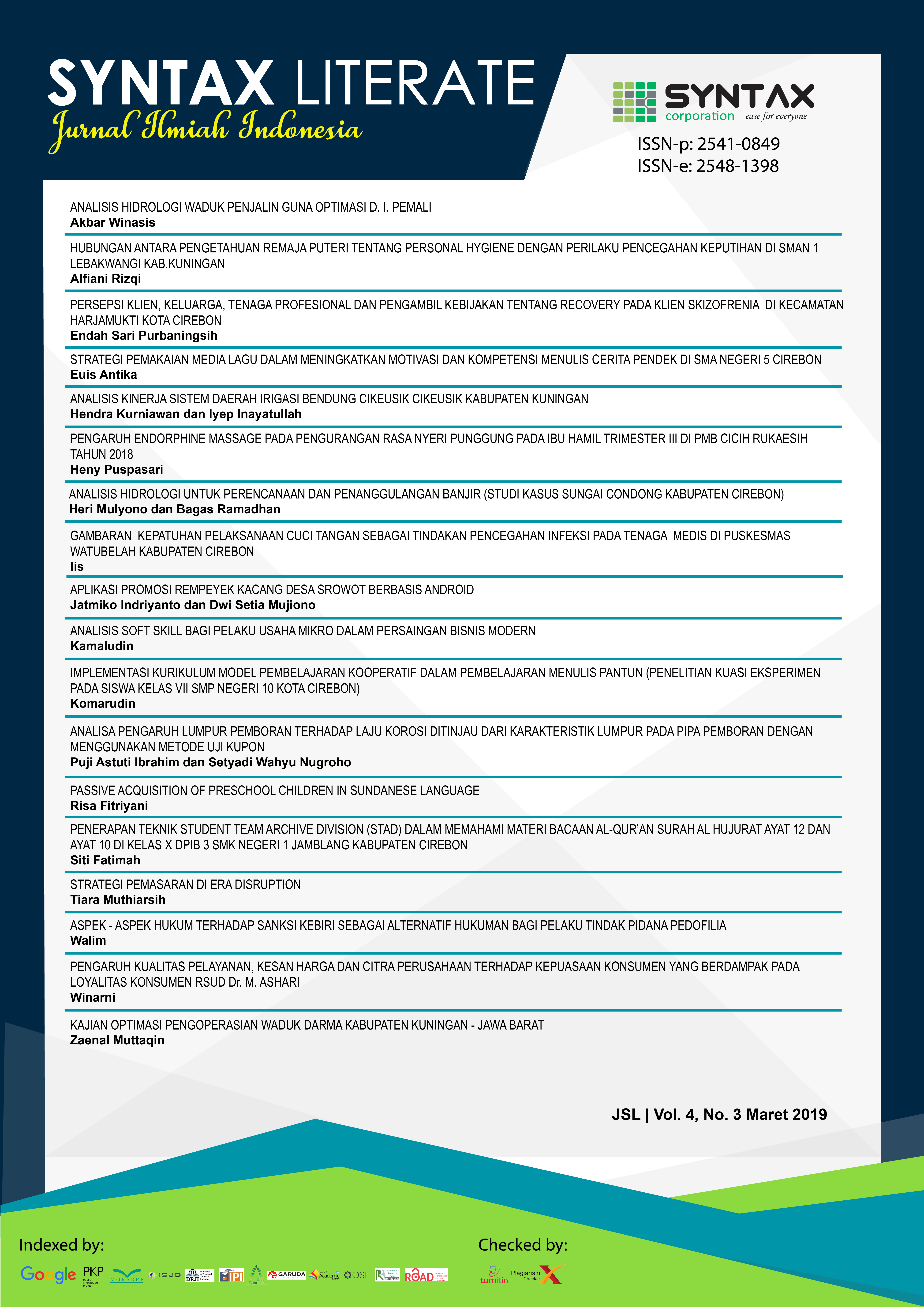PASSIVE ACQUISITION OF PRESCHOOL CHILDREN IN SUNDANESE LANGUAGE
Abstract
In linguistic and acquisition theory, passive is a complex structure which is not
acquired in child language. This construction is a late acquisition for about fourth
age in English, the age of fifth in German and eighth in Hebrew. In Sundanese
language as one of language in Indonesia, passive structure was acquired and used
productively earlier in an almost perfect construction of the age of three. Data in
this research showed that the child of 3,1 years old; 4,1 years old; 4,7 years old;
and 5,0 years old which are used Sundanese language as their first language, can
produce passive constructions of the simple to the complex ones although there are
still many errors in the order of the constructions. Through analysis of 75 passive
sentence as the data, this research described for three points in the statement of
research. Those are what the semantic roles which are include in the passive
construction are, how the stages of the passive production of the partisipants are,
and what the similarities and differences between boys and girls in the productivity
of passive constructions are. The result of reasearch showed that children acquired
passive construction from the simple one based on the structure and meaning to
the more complex one. The stages are from the use of first passive’s first class in
Sundanese grammar of Coolsma (1985). For the similarities and differences
between boys and girls are that all children took the same stages of the passive
production either in semantic roles or verb class of passive but the girls tend to be
more verbalistic than boys. This was showed by the number of data and the
accuracy of their constructions. Boys are tend to say by the simple construction and
using the gesture. .
Keywords: Passive structure, Sundanese Language, Semantic Role, the Stages of Language Acquisition











